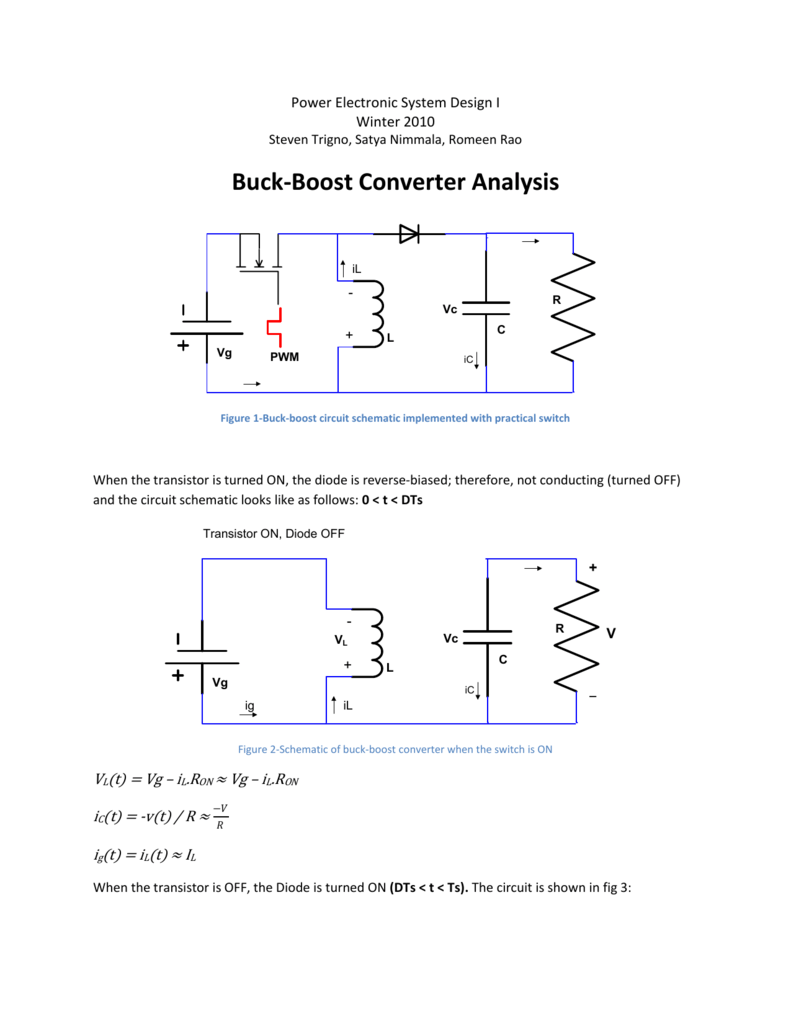
Schematic Of Buck Boost Converter Wiring Diagram
ABSTRACT This application note gives the equations to calculate the power stage of a non-inverting buck-boost converter built with an IC with integrated switches and operating in continuous conduction mode. See the references at the end of this document if more detail is needed. For a design example without description, see appendix A. Contents

PPT DCDC Converter(II) (BuckBoost & Cuk ) PowerPoint Presentation ID1595892
A buck-boost converter is an essential power electronic device that operates in both buck (step-down) and boost (step-up) modes. This versatile converter regulates the output voltage at a constant level, regardless of the input voltage, ensuring a stable supply to the connected electronic devices.

Some properties of buck, boost and buckboost converters. Download Scientific Diagram
A buck converter (buck converter) is a DC-to-DC power converter that lowers the voltage from the source to the load (in drawing a smaller average current).A boost converter or a DC boost chopper is another name for a DC boost converter.

Solved In a buckboost converter with the following circuit
The buck-boost transformer size can be calculated as follows: P = I ×E 1000 = 17.5× 32 1000 = 0.560 kV A P = I × E 1000 = 17.5 × 32 1000 = 0.560 k V A. A buck-boost transformer larger than 0.560 kVA can be installed to boost the voltage to the required level. When both loads are turned on, the voltage at the loads is 120.3 V.

Schematic Of Buck Boost Converter Wiring Diagram and Schematics
Buck-Boost Switching Regulator. The Buck-Boost switching regulator is a combination of the buck converter and the boost converter that produces an inverted (negative) output voltage which can be greater or less than the input voltage based on the duty cycle. The buck-boost converter is a variation of the boost converter circuit in which the.

Conversor CCCC BuckBoost Modo de Condução Contínua CCM YouTube
Efficiency Parameters. From these equations, the following parameters can be used to improve the efficiency of a buck converter. Keep in mind that typically the output voltage and current are.

Buck Boost Converter Design Equations Tessshebaylo
Here, we introduce the buck-boost converter topology and it's two switching operation modes. We derive the relationship between the input voltage, average ou.
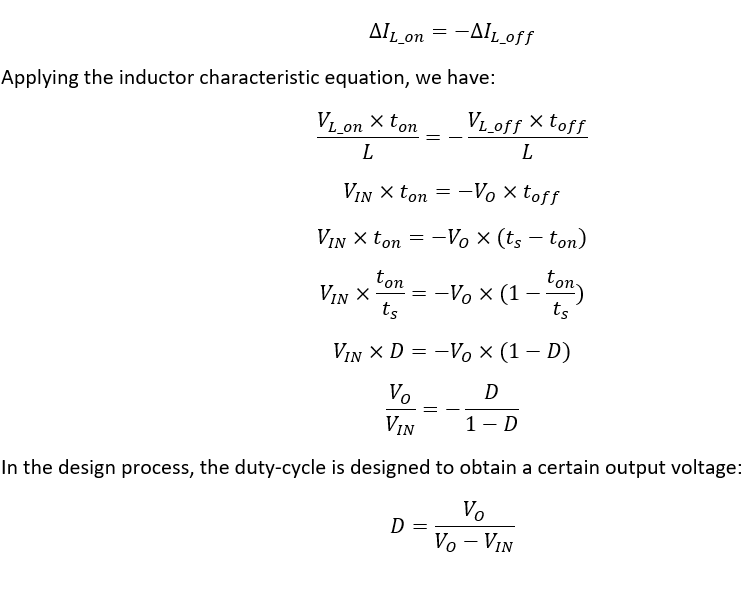
Buck Boost Converter HardwareBee Semipedia
The four basic DC-DC converters considered for analysis are the following: Buck Converter, Boost Converter, Buck-Boost Converter and Ćuk Converter. This technical article deals with the analysis of the four fundamental DC-DC converters (or choppers) in equilibrium.

BuckBoost Converter Voltage Equation in Discontinuous Conduction Mode (DCM) YouTube
Basic Inductor Design. The output of the synchronous buck converter consists of an inductor and capacitor. The output stage stores and delivers energy to the load and produces a constant output voltage. Inductors are manufactured in various materials and with a wide range of values, typically having a tolerance of ±20%.

Structure of the buckboost circuit topology. Download Scientific Diagram
A Buck-Boost converter transforms a positive DC voltage at the input to a negative DC voltage at the output. The circuit operation depends on the conduction state of the MOSFET: On-state: The current through the inductor increases and the diode is in blocking state. Off-state: Since the current through the inductor can not abruptly change the.

Schematic diagram of buck, boost, and buckboost converter (a) buck... Download Scientific
The following four parameters are needed to calculate the power stage: Input voltage range: V IN(min) and V IN(max) Nominal output voltage: VOUT Maximum output current: I OUT(max) Integrated circuit used to build the buck converter. This is necessary because some parameters for the calculations must be derived from the data sheet.
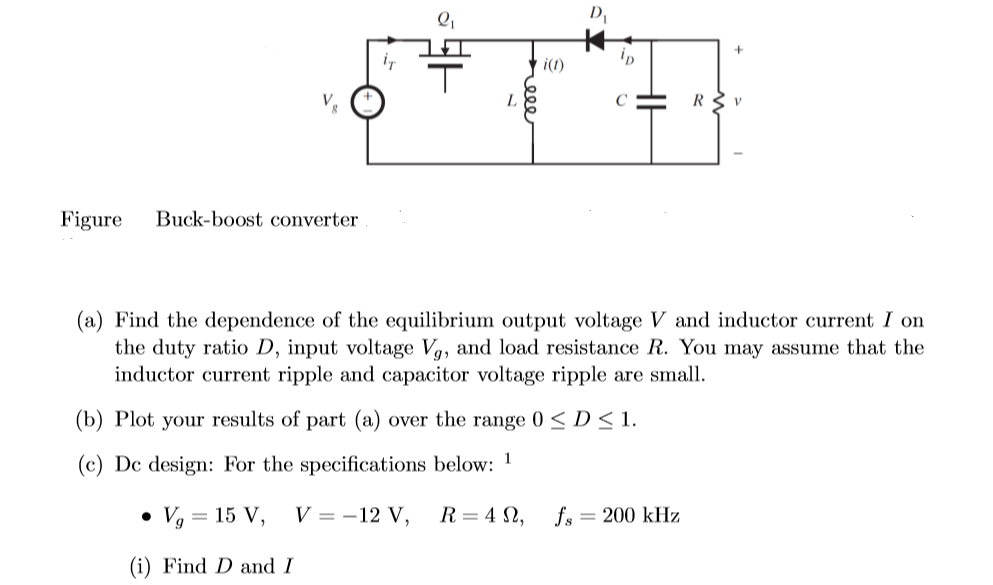
Solved Figure Buckboost converter (a) Find the dependence
Buck-boost (step-down and step-up) converters are widely used in industrial personal computers (IPCs), point-of-sale (POS) systems, and automotive start-stop systems. In these applications, the input voltage could be either higher or lower than the desired output voltage.
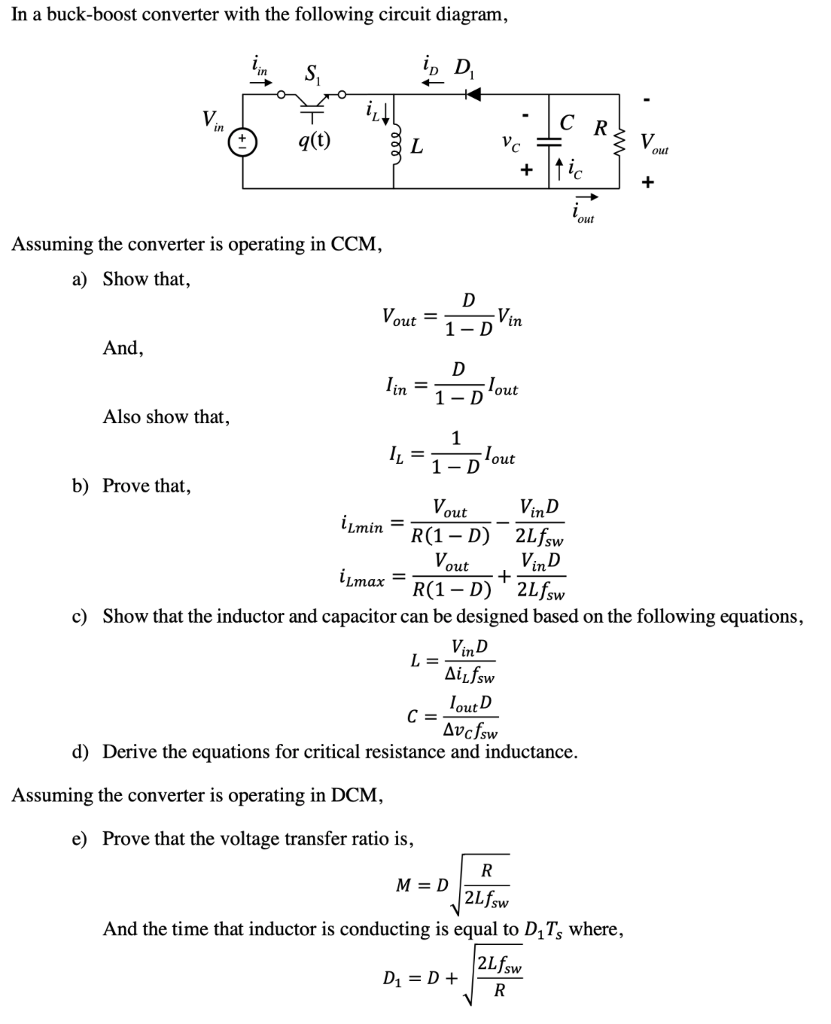
Solved Figure Buck Boost Converter A Find The Dependenc Images
Basic Calculation of an Inverting Buck-Boost Power Stage IlonaWeiss ABSTRACT This application note provides basic formulas that you need to design the power stage of an inverting buck-boost converter. The premise is that the power switch is integrated in the IC and the rectification is done by a diode (non-synchronous power stage).

BuckBoost Converter Critical Inductance Value YouTube
This application note gives the equations to calculate the power stage of a boost converter built with an IC with integrated switch and operating in continuous conduction mode. It is not intended to give details on the functionality of a boost converter (see Reference 1) or how to compensate a converter.
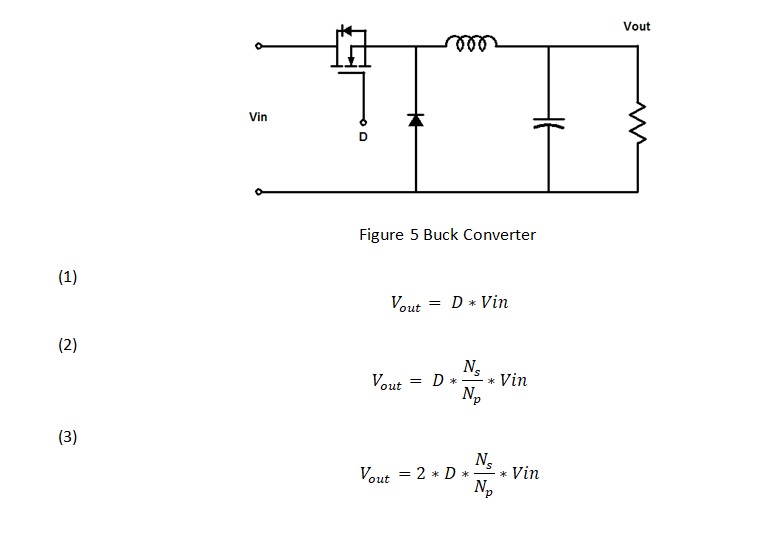
Stability Analysis of Feedback Loops Part Two
The circuit for the buck-boost converter is shown in Figure 8 and the related waveforms of the buck-boost converter in the case of continuous conduction mode are shown in Figure 9. Figure 8. Circuit for the buck-boost converter . Figure 9. Supply current, diode current, inductor current, and inductor voltage respectively (buck-boost converter.

Buck Boost Converter Design Equations Tessshebaylo
A buck-boost converter provides an output voltage that can be either less than or greater than the dc input voltage V S. Hence the name "buck boost". The output voltage polarity is opposite to that of the input voltage. It is a combination of buck and boost converters. Figure 1: Circuit Diagram of Buck Boost Converter.